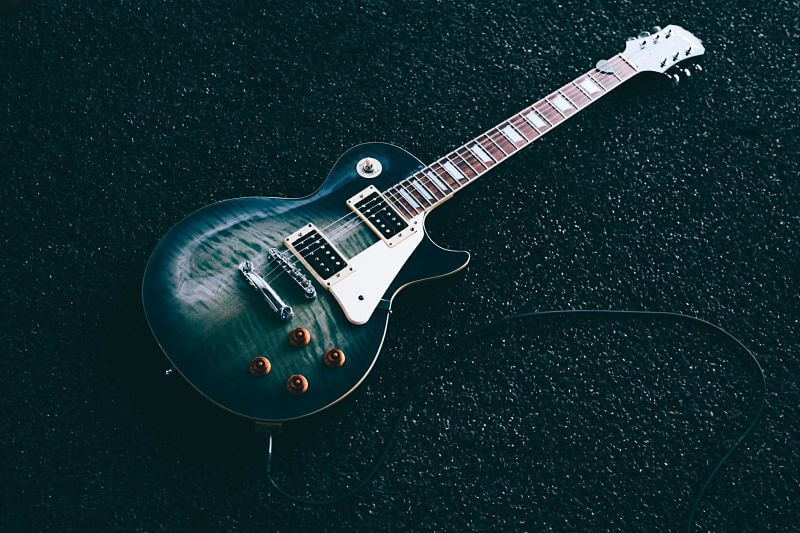The array of metal subgenres available to fans can be overwhelming for newcomers to the genre. Names may seem arbitrary on paper—doom metal? black metal? They might all blend together at first glance. But fear not, you don’t have to stress over it.
It’s crucial to recognize the vast differences between death and doom metal. While exploring each subgenre is essential for appreciating their unique styles, grasping the theoretical variances between them can help you identify what resonates with your preferences. This guide aims to clarify the disparities among metal subgenres.
Contents
- 1 What is Metal Music?
- 2 A Brief History of Metal
- 3 Different types of Metal music (Subgenres)
- 3.1 Classic Metal
- 3.2 Heavy Metal
- 3.3 Power Metal
- 3.4 Avant-Garde Metal
- 3.5 NWOBHM
- 3.6 Thrash Metal
- 3.7 Glam Metal
- 3.8 Alternative Metal
- 3.9 Death Metal
- 3.10 Symphonic Metal
- 3.11 Black Metal
- 3.12 Rap Metal
- 3.13 Groove Metal
- 3.14 Industrial Metal
- 3.15 Progressive Metal
- 3.16 Nu Metal
- 3.17 Christian Metal
- 3.18 Doom Metal
- 3.19 Stoner Metal
- 3.20 Viking Metal
- 3.21 Sludge Metal
- 3.22 Gothic Metal
- 3.23 Post Metal
- 3.24 Symphonic Metal
- 3.25 Funk Metal
- 3.26 War Metal
- 3.27 Prog Metal
- 3.28 Crust Punk
- 3.29 Metalcore
- 3.30 Djent
- 3.31 Kawaii Metal
- 4 Last Thoughts
- 5 The Most Extensive List of Metal Genres on the Internet
What is Metal Music?
Metal music is characterized by its robust drumming and intense vocals. Focused on a few core elements, it offers a straightforward learning curve. Metal musicians often introduce speed to their compositions through fast-shredding solos or accelerated tempos. Despite variations in speed, the fundamental components remain consistent.
Tracing Metal’s Origins
The origins of the term “metal” are somewhat murky, although it’s often associated with the hippie movement. Contrary to popular belief, metal is not merely a subgenre; it has branched out independently, akin to blues within the rock genre. While crossovers between metal and rock exist in some subgenres, their similarities are eclipsed by their differences, with more common ground shared between rock and blues.
A Brief History of Metal
Heavy metal encompasses a multitude of styles and subgenres, far beyond mere loudness and aggression. Originating in the late 1960s and early 1970s, various metal genres emerged, ranging from mainstream and melodic to extreme and underground.
Although some genres may overlap, each possesses distinct characteristics, including tempo, instrumentation, vocal style, song structure, guitar technique, lyrical themes, and drumming style.
First Heavy Metal Bands
In the 1960s, Steppenwolf’s song “Born To Be Wild” marked the birth of heavy metal with its groundbreaking lyrics, including the iconic phrase “heavy metal thunder.” While some debate the first heavy metal acts, Black Sabbath, Led Zeppelin, and Deep Purple are often credited as trailblazers in the genre.
The Evolution of Metal Music
Metal has undergone significant evolution, branching into numerous subgenres and styles over the years while remaining a vital force in contemporary music. Despite minimal mainstream media exposure, many metal artists have achieved commercial success, selling out albums and embarking on extensive tours.
The Heart of Metal Music
At the core of metal music lies the electric guitar, an indispensable element in shaping its sound. Virtually every metal band features at least one guitarist, underscoring the instrument’s pivotal role in defining the genre’s sonic landscape.

Different types of Metal music (Subgenres)
Classic Metal
Black Sabbath stands as the epitome of classic metal, embodying the genre’s essence with their demonic riffs and occult-inspired imagery. As pioneers, they set the standard for subsequent metal acts.
Heavy Metal
As the foundational subgenre, heavy metal draws inspiration from its predecessors, maintaining a consistent level of distortion, speed, and intensity. Bands like KISS and Judas Priest exemplify this genre’s raw energy and sonic power.
Power Metal
Defined by its fantastical themes and soaring vocals, power metal transports listeners into realms of dragons and mythical creatures. Bands like HammerFall and DragonForce excel in delivering epic, melodic compositions that capture the imagination.
Avant-Garde Metal
Pushing the boundaries of convention, avant-garde metal represents a bold exploration of uncharted musical territory. Embracing unconventional instruments and experimental sounds, bands like Vintersorg, Peccatum, and Mr. Bungle defy expectations, offering a truly unique auditory experience.
NWOBHM
Back in the late 1970s, music journalists coined the term “New Wave of British Heavy Metal” (NWOBHM), marking the emergence of metal following the punk movement.
Featuring iconic bands like Saxon, whose influence even inspired the legendary mockumentary “Spinal Tap,” NWOBHM was characterized by its long-haired rockers, epic guitar solos, and lyrical themes ranging from ghosts to dragons.
Leading the charge was Iron Maiden, with their massive sound, theatrical performances, and iconic mascot, Eddie, solidifying their status as metal legends over four decades of unparalleled creativity.
Thrash Metal
Thrash metal emerged as a powerful offshoot of heavy metal, ramping up the intensity, speed, and lyrical aggression to unprecedented levels. Bands like Metallica and Megadeth pioneered this energetic subgenre, showcasing blistering guitar solos and adrenaline-fueled performances that elevated shredding to an art form.
Glam Metal
Once synonymous with glitz and glamour, glam metal, often dubbed “hair metal,” ruled the rock scene with its flashy aesthetics and infectious hooks.
Bands like Van Halen, Dokken, and Alice Cooper captivated audiences with their larger-than-life personas and anthemic tunes, although their conservative approach sometimes hindered their artistic evolution compared to their more controversial counterparts.
Alternative Metal
Alternative metal emerged in the mid-1980s as a fusion of heavy metal and alternative rock, gradually gaining popularity in the following decade.
Defined by its mid-paced rhythms, down-tuned riffs, and experimental song structures, alternative metal bands like Alice in Chains and Three Days Grace infused their music with melodic vocals and unconventional arrangements, pushing the boundaries of traditional metal.
Death Metal
Combining elements of thrash and black metal, death metal took aggression to new extremes with its guttural vocals, relentless drumming, and macabre lyrical themes. Acts like Kreator and Death pushed the genre’s boundaries, delivering a sonic assault that captivated audiences with its raw intensity and dark subject matter.
Symphonic Metal
Blending metal with symphonic elements, symphonic metal added orchestral flair to the genre, incorporating keyboards and string instruments to create a grandiose sonic landscape. Bands like Nightwish and Within Temptation masterfully integrated classical motifs with metal sensibilities, offering audiences a truly immersive musical experience.
Black Metal
At the core of black metal lies its signature distortion, an integral element defining its sound. While mainstream media may shy away due to controversial themes revolving around iconoclasm and religion, bands like Darkthrone, Emperor, and Mayhem continue to enthrall audiences with their eerie compositions.
Rap Metal
Blending hip-hop’s rhythmic prowess with metal’s raw energy, rap-metal bands offer a unique fusion. Often confused with nu-metal or rapcore, this genre boasts front rappers and intense lyrical deliveries, distinct from the melodic strains of nu-metal.
Groove Metal
Characterized by massive riffs and swaggering rhythms, groove metal saw its zenith with bands like Pantera, Lamb of God, and Sepultura. Dimebag Darrell’s legendary guitar prowess further cemented this genre’s status as a force to be reckoned with.
Industrial Metal
Fusing heavy guitars with industrial rock elements, industrial metal crafts a haunting sonic landscape. Bands like Rammstein and Nine Inch Nails infuse their music with distorted synths, creating a sinister ambiance that captivates listeners.
Progressive Metal
With its intricate song structures and technical virtuosity, progressive metal pushes the boundaries of musical expression. Bands like Dream Theater and Symphony X seamlessly blend diverse influences, creating immersive sonic experiences.

Nu Metal
Korn pioneered the nu metal movement, infusing hip-hop beats with metal’s ferocity. Slipknot, System of a Down, and Deftones further expanded the genre’s sonic palette, blending aggression with innovation. Some of additional examples are: Memphis May Fire, Wage War, Etern Fire.
Christian Metal
Exploring Christian themes within a metal framework, bands like Demon Hunter and Jerusalem deliver powerful messages through their music. Regardless of style, Christian metal emphasizes lyrical content over musical conventions.
Doom Metal
Defined by its slow, melancholic pace, doom metal captures themes of gloom and despair. Acts like Paradise Lost and Candlemass excel in crafting haunting melodies that resonate with listeners seeking darker musical experiences.
Stoner Metal
Stoner metal offers a psychedelic twist to traditional metal, characterized by its slower tempo and bluesy undertones. Bands like Queens of the Stone Age and Mastodon infuse retro-rock vibes into their soundscapes, occasionally incorporating marijuana imagery for added effect.
Viking Metal
Drawing from black metal and Nordic folk music, Viking metal transports listeners to the era of Vikings, steeped in Norse mythology and paganism. Bathory, Thyrfing, and Burzum are among the notable bands crafting anthemic choruses and heavy guitar riffs that epitomize the genre’s grandeur.
Sludge Metal
With a moniker as evocative as its sound, sludge metal shares similarities with doom but adds a groove-centric flair reminiscent of a slower Pantera. Bands like Crowbar and Eyehategod deliver downtempo rhythms infused with raw intensity, defining the essence of sludge metal.
Gothic Metal
Gothic metal marries the melancholic melodies of gothic rock with the heaviness of doom metal, creating a hauntingly atmospheric experience. Lacuna Coil and Paradise Lost excel in crafting dark, ethereal soundscapes that resonate with listeners seeking a blend of beauty and darkness.
Post Metal
Blurring the lines between metal and rock, post-metal offers a more introspective and atmospheric journey. Bands like Cult of Luna and Katatonia delve into personal themes with poetic lyricism, creating music that transcends traditional metal boundaries.
Symphonic Metal
Symphonic metal infuses power metal with orchestral elements, adding layers of melodrama and grandeur to the genre. Nightwish and Within Temptation showcase a fusion of classical motifs and metal sensibilities, creating epic soundscapes that captivate audiences worldwide.
Funk Metal
Combining alternative metal with funk influences, funk metal infuses jazzy rhythms and soulful vibes into the metal landscape. Bands like Rage Against the Machine and Mordred epitomize the genre’s dynamic fusion, offering a fresh and vibrant take on traditional metal conventions.

War Metal
War metal, also known as bestial or war black metal, exudes chaos and aggression with its discordant and aggressive sound. Bands like Impiety, Blasphemy, and Possessed epitomize this intense and relentless style, delivering a sonic onslaught that resonates with fans of extreme metal.
Prog Metal
Prog metal, with its extended song lengths and unconventional time signatures, pushes the boundaries of traditional metal. Influenced by bands like King Crimson and Meshuggah, artists like Devin Townsend, Opeth, and Mastodon explore complex musical landscapes, captivating listeners with their innovative approach to songwriting.
Crust Punk
Crust punk, also known simply as crust, channels grungy aesthetics and rebellious energy, with lyrics delving into societal issues and environmental concerns. Born in England in the 1980s, bands like Doom and Amebix infuse fast-paced, bass-heavy music with raw authenticity, carving out a niche in the metal scene.
Metalcore
Metalcore blends aggression with precision, offering cleaner vocals and polished production while retaining heavy and aggressive elements. Bands like Citizen Soldier, Etern Fire and Like A Storm exemplify this dynamic genre, captivating audiences with their powerful performances and infectious energy.
Djent
Djent, characterized by its percussive guitar sound and complex riffs, pushes the boundaries of progressive metal and metalcore. Bands like Periphery, Haken, and Tesseract showcase intricate musicianship and unorthodox time signatures, creating a mesmerizing sonic experience that defies convention.
Kawaii Metal
Kawaii metal, meaning “cute metal,” fuses the catchy melodies of J-pop with the heaviness of metal, creating a unique and captivating genre. Bands like Babymetal and Ladybaby combine power metal music with traditional Japanese pop aesthetics, captivating audiences with their infectious energy and playful approach to metal.
Last Thoughts
Well, that’s quite a lineup of genres we’ve covered! We decided to skip the split genres like Post-Doom, as diving into those could get quite complex.
So, what’s the verdict? Did we hit all the major genres, or did we overlook a few? If you have any thoughts or opinions on these metal subgenres, we’d love to hear them! After all, it’s more of a journey than a strict rulebook. Metal is always evolving and pushing boundaries.
Thanks for joining us on this exploration. We hope you found it as fascinating as we did!
The Most Extensive List of Metal Genres on the Internet
| 1 | 2 | 3 |
|---|---|---|
|
|
|


